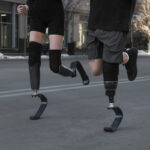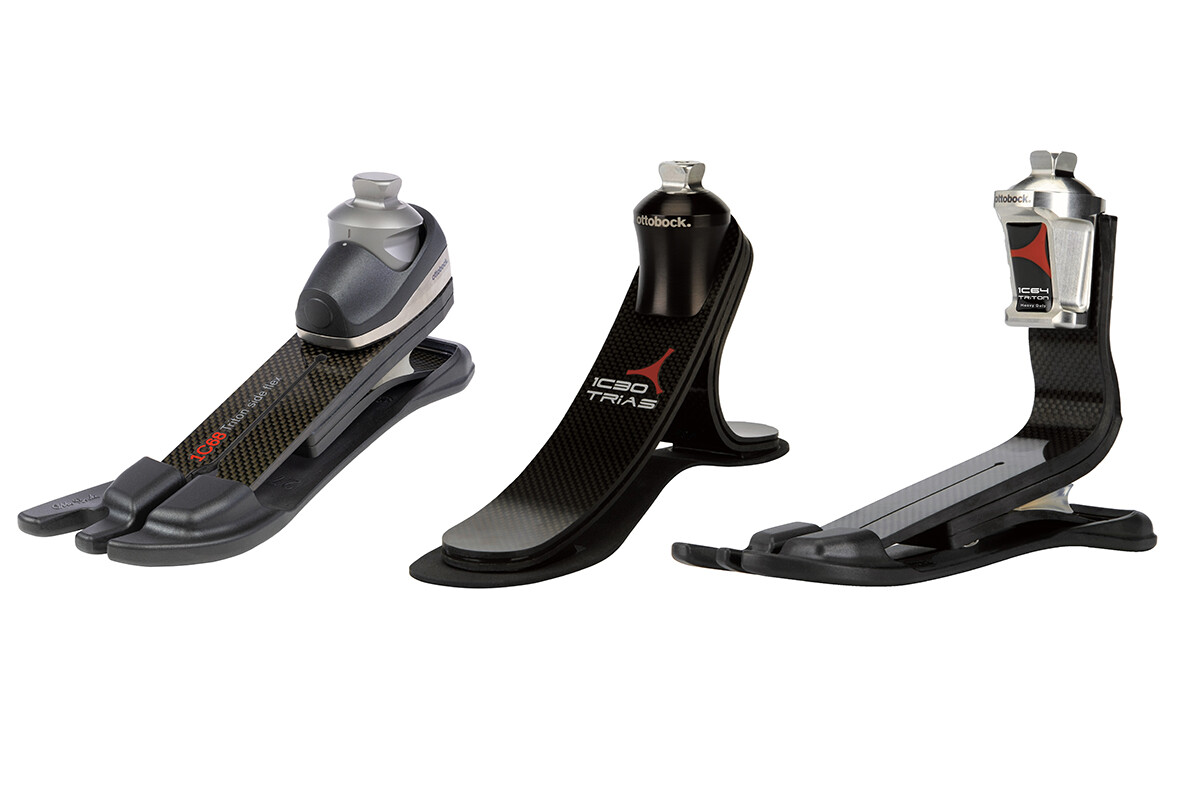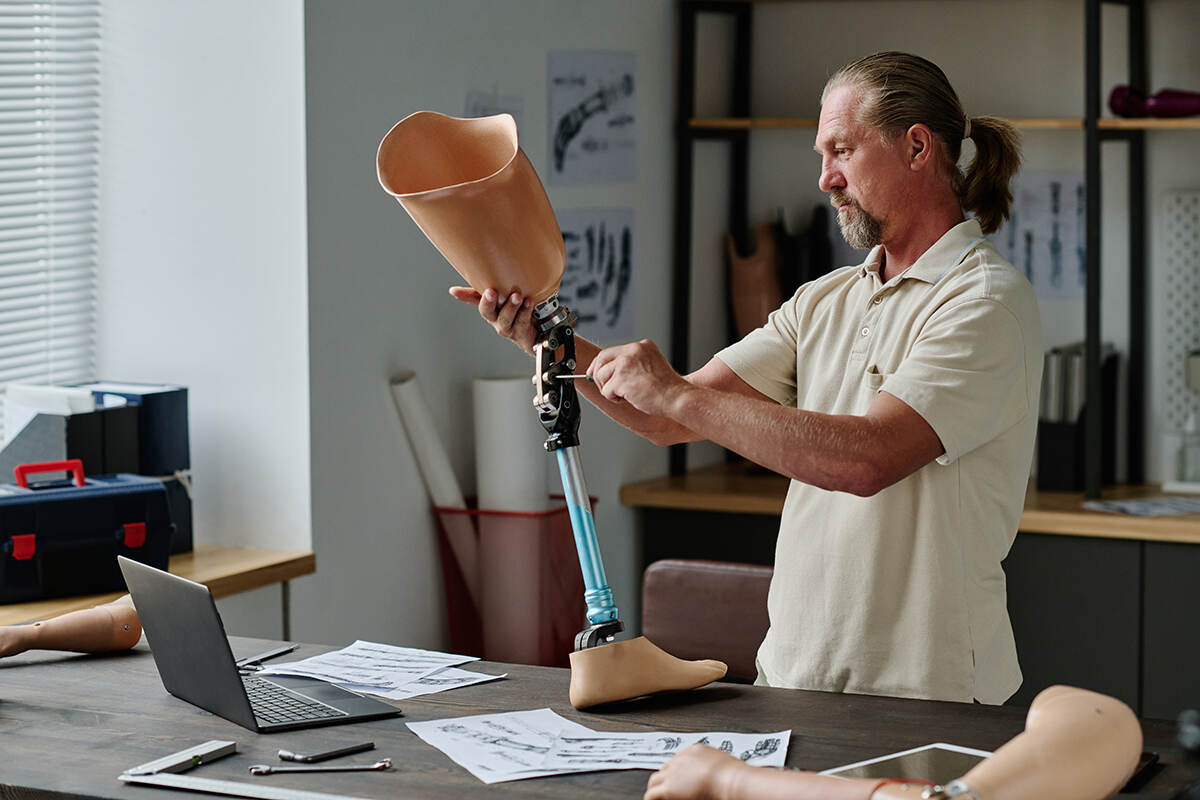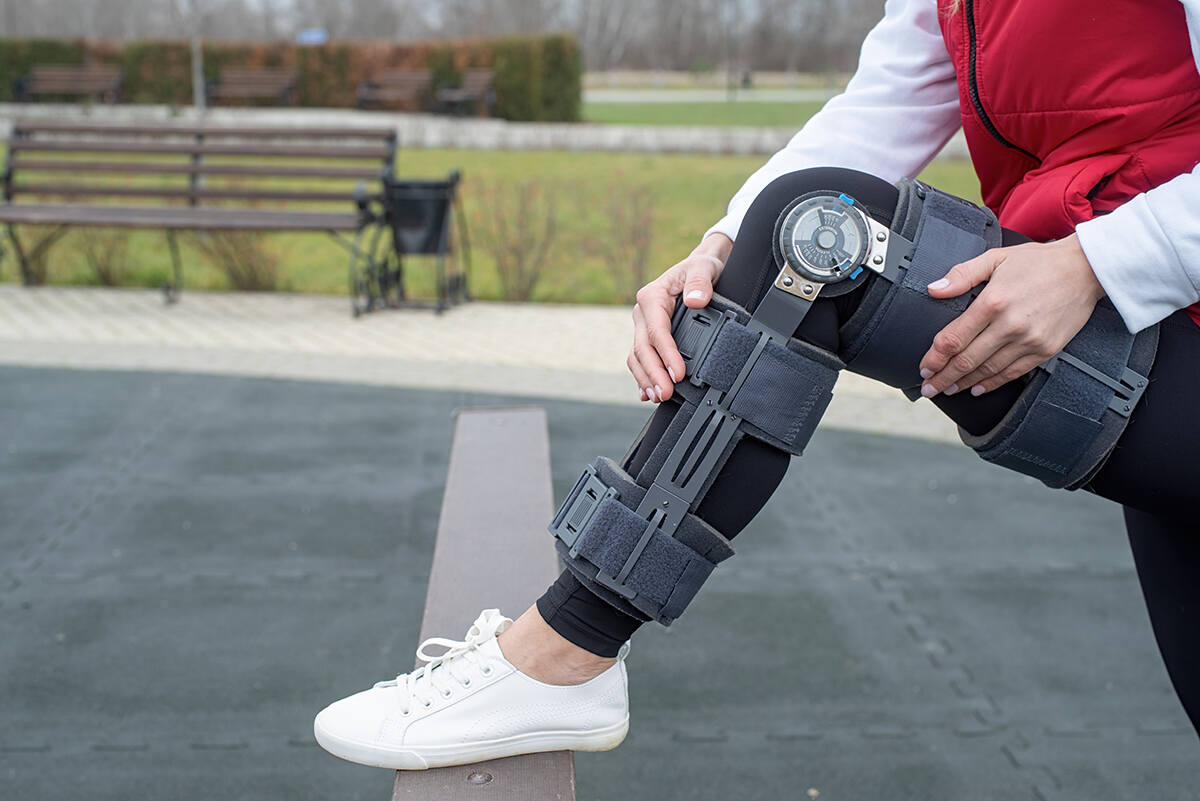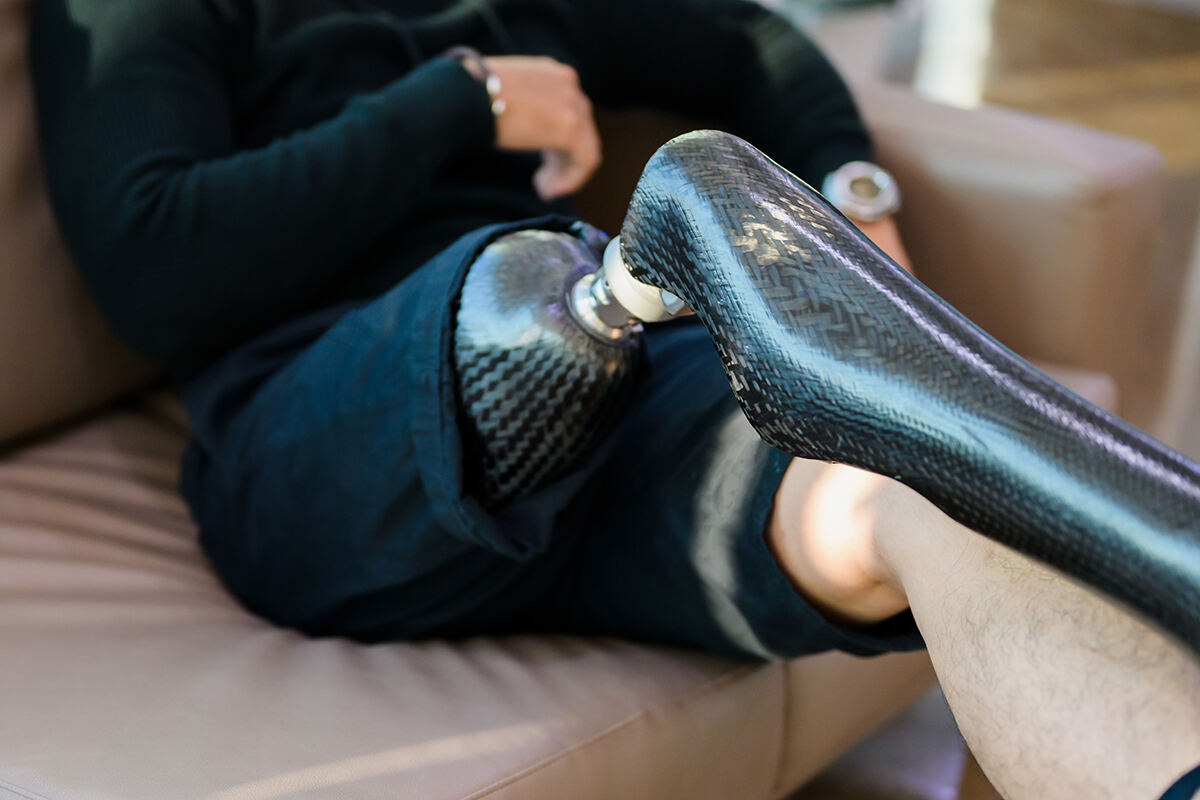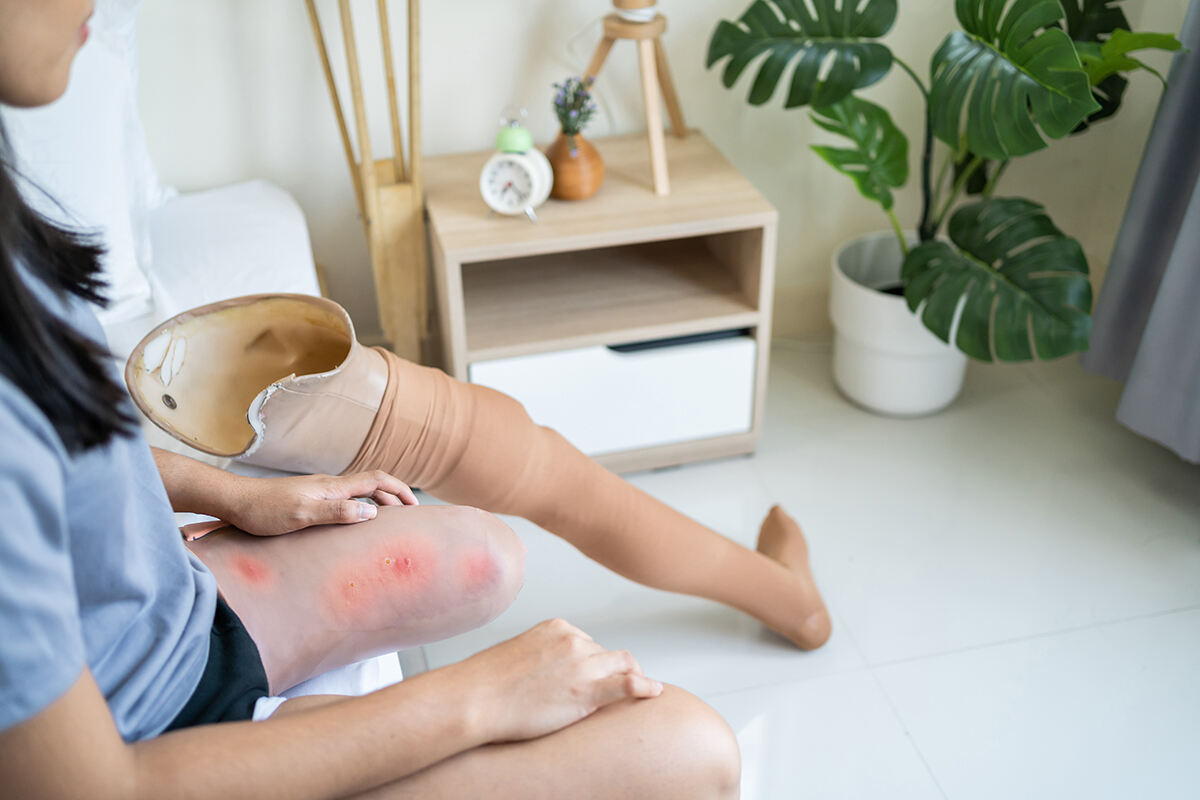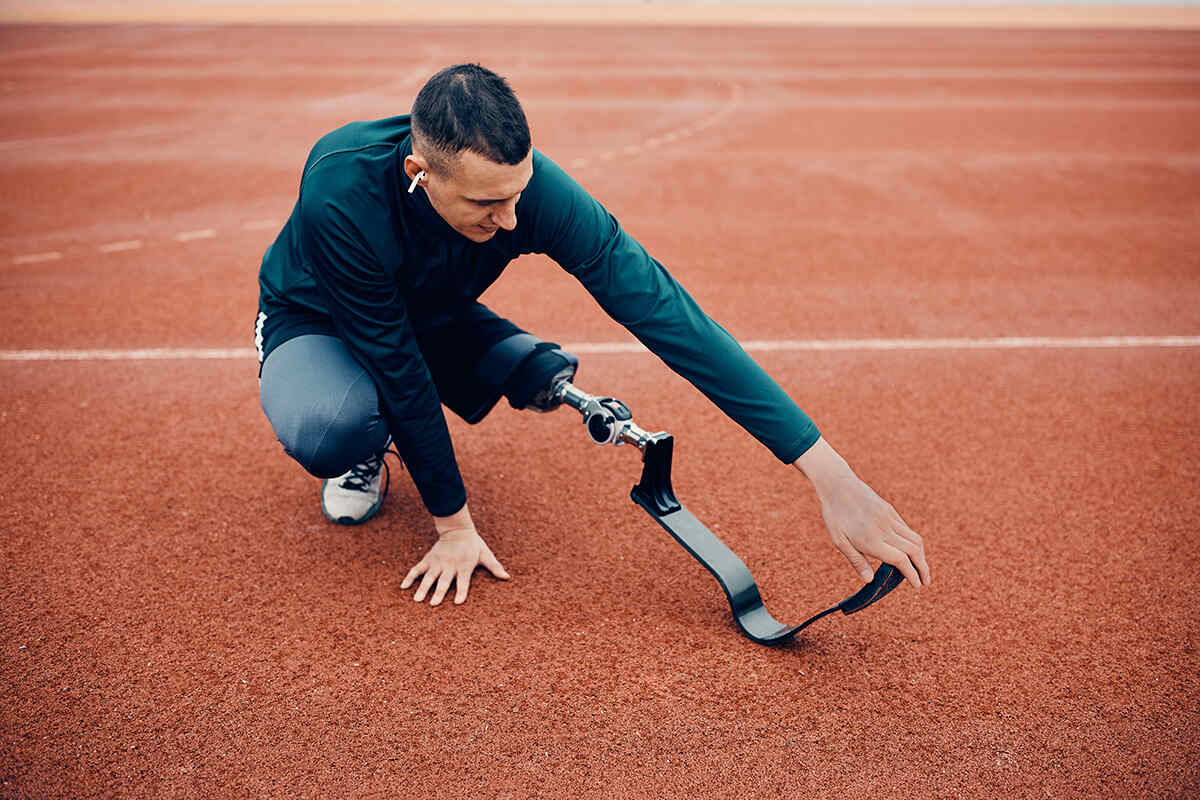Phantom limb pain affects a staggering 60-90% of amputees, often causing significant distress and impacting their quality of life. But what if there were a non-pharmacological, non-invasive therapy that could help alleviate this pain? Enter mirror therapy! A promising approach that has gained attention for its potential to provide relief from phantom limb pain.
In this blog post, we will explore the science behind mirror therapy for phantom limb pain and its effectiveness in treating phantom limb pain. We will delve into the clinical studies that support its use, compare it to other treatment options, and provide practical guidelines for implementing mirror therapy. By the end, you’ll have a comprehensive understanding of this innovative treatment approach and its potential to improve the lives of amputees.
Key Takeaways
- Mirror Therapy has been scientifically-proven to reduce discomfort related to phantom limb pain through optical illusions.
- Clinical studies have demonstrated significant positive outcomes with mirror therapy, making it a viable treatment option for those seeking relief.
- Amputees have shared personal stories of successful reduction in phantom limb pain after regular practice of mirror therapy.
Understanding Phantom Limb Pain
Phantom limb pain is a neuropathic pain experienced by individuals who have undergone amputation, often resulting from the sensation of phantom limbs, also known as phantom limb sensation. Affecting 60-90% of amputees, some cases can be severe phantom limb pain and debilitating. Various treatment options are available, including pharmacological interventions such as gabapentin, amitriptyline, and morphine, as well as non-pharmacological treatments like transcutaneous electrical nerve stimulation and acupuncture.
Despite the availability of these treatments, phantom limb pain remains a challenging condition to manage. One innovative approach that has gained attention is mirror therapy, which uses visual feedback to trick the brain into perceiving the amputated limb as intact. But how exactly does mirror therapy work, and what does the research say about its effectiveness?
The Science Behind Mirror Therapy
Developed by Vilayanur S. Ramachandran, mirror therapy is a non-pharmacological approach for addressing phantom limb pain. This method involves:
- Using a mirror to create a reflection of the intact limb
- Deceiving the brain into believing the amputated limb is still present
- Potentially reducing discomfort
Visual-Proprioceptive Dissociation
The key to mirror therapy’s effectiveness lies in resolving the mismatch between visual and proprioceptive feedback in the brain, which is where mirror visual feedback comes into play. Proprioception, also known as kinesthesia, is our body’s ability to sense movement, action, and location, enabling our muscles and joints to coordinate and move with the necessary position, speed, and force for various activities. Research has shown that visual feedback can enhance proprioceptive perception and motor control, with the interaction between vision and proprioception playing a crucial role in the effectiveness of mirror therapy.
The reflected image of the intact limb during mirror therapy offers the brain simulated visual signals. This assists in resolving the discrepancy between visual and proprioceptive feedback in the brain, potentially mitigating phantom limb pain.
Neural Repair and Reorganization
Mirror neurons play a significant role in the success of mirror therapy. These neurons modulate their activity both when an individual performs a specific motor act and when they observe the same or similar act being performed by another individual. In the context of mirror therapy, mirror neurons facilitate the reorganization and integration of proprioception and visual feedback of the removed body part.
This process of cortical restructuring in the brain can lead to pain reduction. By utilizing mirror neurons to reorganize and integrate the mismatch between proprioception and visual feedback, mirror therapy has the potential to provide significant relief for those suffering from phantom limb pain and complex regional pain syndrome. A physical therapist skilled in this technique can be a valuable resource for patients experiencing these conditions.
Clinical Studies on Mirror Therapy for Phantom Limb Pain
To evaluate the efficacy of mirror therapy for phantom limb pain relief, researchers have conducted randomized controlled trials, case reports, and observational studies. These studies have investigated various aspects of mirror therapy, such as its effectiveness compared to other treatments, and the optimal duration and frequency of therapy sessions.
Randomized Controlled Trials
One notable randomized single crossover trial included 64 amputees with missing limb and phantom limb pain, who were divided into test and control groups. The study found a significant decrease in phantom limbs induced pain intensity, frequency, and duration following mirror therapy, with effects persisting for up to 12 weeks post-therapy.
These results provide strong evidence for the effectiveness of mirror therapy in reducing phantom limb pain.
Case Reports and Observational Studies
In addition to randomized controlled trials, case reports and observational studies have also reported positive outcomes with mirror therapy. For example, a pilot study on self-delivered mirror therapy found that nearly half of the participants experienced a decrease in phantom pain, averaging at around 40%. Two participants reported a remarkable outcome with no trace of phantom pain. This highlights the effectiveness of the treatment administered..
These findings, along with the results from randomized controlled trials, suggest that mirror therapy can be an effective treatment for phantom limb pain.
Comparing Mirror Therapy to Other Treatment Options
Although mirror therapy has demonstrated promising results in addressing phantom limb pain, it is necessary to compare its effectiveness with other treatment strategies to alleviate phantom limb pain. Pharmacological interventions such as morphine, gabapentin, ketamine, and tricyclic antidepressants are often used to address phantom limb pain. In addition, spinal cord stimulation has been reported to reduce phantom limb pain in up to 60% of patients, with a reduction of over 50% in the majority of cases.
Nonetheless, it is noteworthy that mirror therapy’s clinical efficacy surpasses many other treatments. As a non-pharmacological, non-invasive therapy, mirror therapy offers a unique alternative to traditional treatments and should be considered alongside other options when seeking relief from phantom limb pain.
Implementing Mirror Therapy: Practical Guidelines
For those considering mirror therapy, adhering to practical guidelines can help maximise the potential results. First, it’s important to understand how to set up a mirror box, which is a simple 3-D structure used to create the visual illusion of an intact limb.
Upon setting up the mirror box, one can start following the suggested duration and frequency of therapy sessions to enhance the effectiveness of the treatment.
Setting Up a Mirror Box
Setting up a mirror box for at-home mirror therapy sessions can be quite straightforward and affordable. The necessary materials include:
- A cardboard box
- A mirror
- Packing tape
- Scissors
By following a step-by-step guide, you can assemble a mirror box that will help create the visual illusion needed for successful mirror therapy.
Duration and Frequency of Therapy
Based on clinical studies and expert opinions, mirror therapy sessions should:
- Last between 10 and 30 minutes
- Have a total intervention time ranging from 225 to 2160 minutes
- Be conducted three to seven times a week for the best results.
It’s important to note that varying the duration and frequency of mirror therapy sessions may have beneficial effects on movement and sensory recovery.
Potential Limitations and Future Research
Although mirror therapy has shown promise as a treatment for phantom limb pain, there are limitations to the current research. Some of these limitations include:
- How baseline pain level and accompanying symptoms can impact treatment results
- The best timing to start the therapy
- How to standardize the usage of the method
- How to evaluate its efficacy compared to other treatments
Future research should focus on:
- Strengthening the intervention protocol
- Enlarging sample sizes
- Employing control groups
- Assessing long-term effects
- Incorporating objective outcome measures
- Conducting randomized controlled trials
By addressing these limitations and refining the methodology, the effectiveness of mirror therapy can be further established and optimized for those suffering from phantom limb pain.
Personal Stories: Amputees Share Their Experiences with Mirror Therapy
The experiences of amputees who have gained relief from phantom limb pain through mirror therapy offer meaningful understanding of the potential benefits of this treatment. Many personal accounts detail:
- The successful reduction of pain when other treatments were unsuccessful
- The effectiveness of mirror therapy after regular practice
- The personal belief that mirror therapy helps with phantom pain
These personal stories, along with the clinical research, highlight the potential of mirror therapy as an effective treatment option for phantom limb pain relief. By sharing their experiences, amputees can inspire others to consider mirror therapy as a valuable tool in their journey towards a pain-free life.
Frequently Asked Questions
What is mirror therapy for phantom limb pain?
Mirror Therapy (MT) is a method developed by Dr. V.S. Ramachandran to relieve phantom limb pain. It involves placing a mirror between the affected limb and the healthy limb, creating an illusion of movement which helps the brain to believe that the missing limb is still functioning. This technique has been successfully used to treat motor disorders like hemiplegia, as well as cerebral palsy.
What is the most effective treatment for phantom limb pain?
The most effective treatment for phantom limb pain involves physical therapy to strengthen damaged muscles and nerves, medications such as non-steroidal anti-inflammatory drugs (NSAIDs) or prescription pain relievers, and complementary therapies including mirror therapy, acupuncture, and music therapy. Additionally, spinal cord stimulation and peripheral nerve stimulation are obtained through implantable devices and can be helpful for both phantom limb pain and related limb pain.
How does mirror therapy work?
Mirror therapy works by using mirror neurons to resolve the mismatch between visual and proprioceptive feedback, allowing for neural repair and reorganization.
What does the research say about the effectiveness of mirror therapy?
Mirror therapy has been demonstrated to be an effective treatment for reducing the intensity, frequency, and duration of phantom limb pain in numerous research studies.



